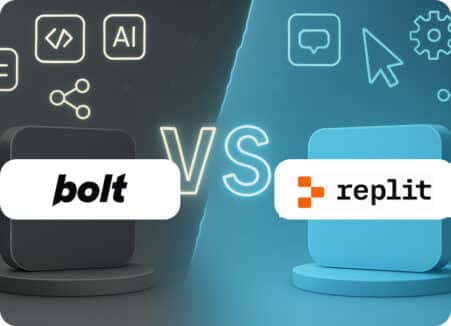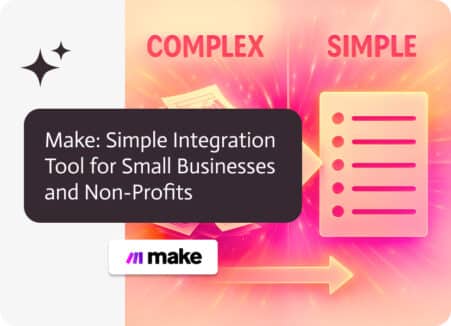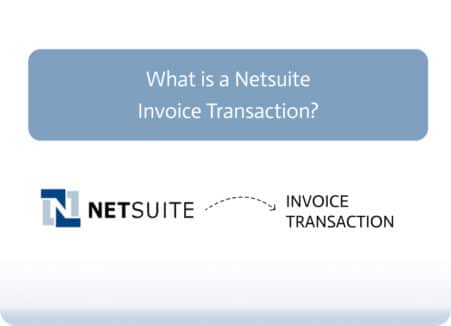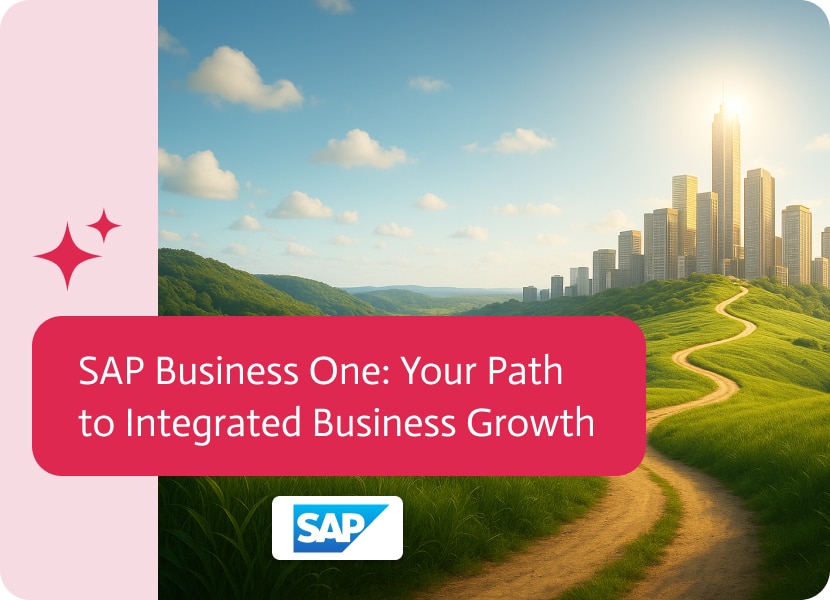
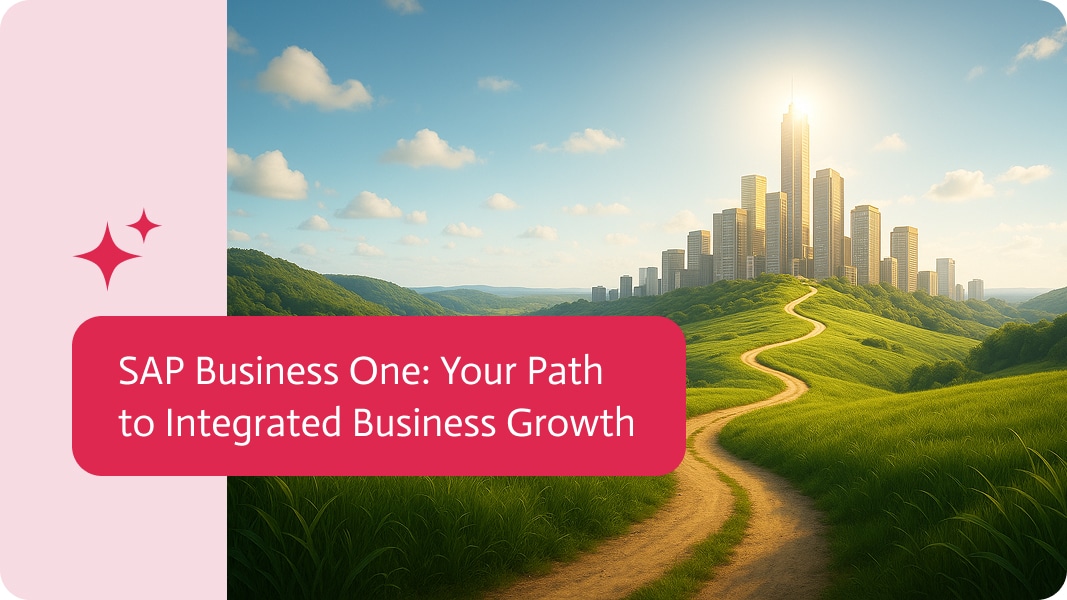
SAP Business One: Your Path to Integrated Business Growth
Modern businesses, small and medium-sized enterprises (SMEs) frequently sit with a common challenge of disparate systems. Sales data might reside in one application, inventory figures in another, and financial records in yet a third. This fragmentation often leads to inefficiencies, data inconsistencies, and a clouded view of the company’s true operational health. Enter SAP Business One a robust and integrated enterprise resource planning (ERP) solution meticulously crafted to address these very pain points for growing businesses.
What is SAP Business One?
SAP Business One is a unified business management solution that is more than just software. Its purpose is to give SMEs a single, all-inclusive platform to manage their entire operations. Business One is specifically designed to be affordable, scalable, and accessible for businesses that are growing quickly but might not have the vast IT resources of a multinational corporation, in contrast to larger, more complex ERP systems designed for multinational corporations.
Think of your company as a central nervous system. SAP Business One strives to be just that. It unifies key business operations into a single system, including purchasing, inventory, customer relationship management, finance, and sales. By doing away with the need for manual data transfers between departments, this integration significantly lowers errors and saves time that would otherwise be spent bringing disparate pieces of information together. You will be able to make better decisions more quickly as a result of having a clearer, real-time picture of your company.
SAP Business One is based on the simple principle of simplifying complexity. It helps companies to improve customer relations, expedite procedures, and boost profitability by offering a comprehensive view of operations.
Core Capabilities: Diving into SAP Business One’s Key Features
SAP Business One is divided into a number of functional modules, each of which handles a distinct aspect of company operations while remaining seamlessly integrated. Because of its modularity, businesses can expand as their needs change and implement what they need right away.
Financial Management
At the heart of any successful enterprise lies sound financial management. A full range of tools are available in SAP Business One to handle all financial transactions, including:
- Journal entries and general ledger accounting: centralized accounting for all company dealings, guaranteeing correct documentation.
- Banking and Reconciliation: A clear picture of cash flow is provided by the streamlined processing of bank statements, incoming and outgoing payments, and reconciliation.
- Accounts Receivable and Payable: Effective handling of vendor and customer invoices, promoting cash flow and preserving positive working relationships with both.
- Fixed Asset Management: Streamlined fixed asset tracking and depreciation, guaranteeing correct financial reporting and compliance.
- Cost accounting is the process of thoroughly examining the expenses related to different projects, business operations, or goods in order to improve pricing and profitability analysis.
Sales and Customer Relationship Management (CRM)
Understanding and meeting the needs of your customers is crucial in the cutthroat market of today. The sales and CRM features of SAP Business One are intended to improve each phase of the customer journey:
- Sales Opportunity Management: Keep tabs on leads, oversee sales operations, and keep an eye on the sales funnel from first contact to closing a deal.
- Sales Order Processing: Effectively creating and managing sales orders, including scheduling deliveries, checking availability, and setting prices.
- Customer management: To promote individualized interactions, keep an extensive database of customer data, including contact information, purchase history, and communication logs.
- Service Management: This module assists companies that provide services in scheduling field service activities, tracking customer service requests, and managing service contracts, all of which contribute to prompt and efficient support.
Purchasing and Inventory Control:
Cost containment and product availability depend on effective inventory and procurement management. Strong tools are available in SAP Business One for:
- Purchase order management: simplified the process of creating and overseeing purchase orders, from choosing a vendor to receiving the goods.
- Goods Receipt and Returns: Precise inventory control is ensured by precise tracking of incoming goods and effective handling of returns.
- Inventory management: Better stock optimization and lower carrying costs are made possible by real-time visibility into inventory levels across several warehouses, including batch and serial number tracking.
- Warehouse Management: Fundamental features for overseeing warehouse activities, such as stock transfers and bin locations.
- Price lists and special pricing: These allow for flexible pricing structure management, including customer-specific pricing and volume discounts.
- These characteristics assist companies in lowering purchasing costs, minimizing stockouts, and streamlining their supply chains.
Production and Material Requirements Planning (MRP):
The production and MRP capabilities are crucial for companies engaged in assembly or manufacturing:
- Bills of Material (BOM): Create and oversee multi-level BOMs for products that list all of the parts and subassemblies.
- Production Orders: Establish and oversee production orders, monitor ongoing projects, and provide updates on finished goods.
- Material requirements planning, or MRP, helps to optimize production schedules and prevent delays by automatically calculating the necessary quantities of components and raw materials based on sales orders, forecasts, and current inventory.
- This module assists manufacturers in increasing productivity, streamlining their production procedures, and guaranteeing on-time delivery of completed goods.
Project Management:
The project management module gives companies that oversee projects, whether they are internal or client-facing, the ability to:
- Establish project phases, tasks, and resources. Monitor progress in relation to budgets and schedules.
- Financial Integration: Provide a clear picture of project profitability by directly connecting project activities to financial transactions.
This feature facilitates improved financial supervision and project execution.
Reporting and Analytics:
- Delivering real-time insights is one of SAP Business One’s most potent features, especially when used with the SAP HANA in-memory database:
- Standard Reports: A large selection of pre-made reports that cover every aspect of business operations and give users instant access to vital information.
- Customizable Reports: Resources for producing custom reports that are suited to particular business requirements and enable in-depth analysis.
- Dashboards and KPIs: Quick evaluation of the state of the company is made possible by visual dashboards that display key performance indicators (KPIs) at a glance.
- SAP HANA Integration: Business One turns raw data into actionable intelligence by utilizing SAP HANA’s power to provide lightning-fast data processing, sophisticated analytics, and predictive capabilities. This enables real-time decision-making that was previously impossible for many SMEs by enabling complex queries to execute in a matter of seconds.
Getting Started with SAP Business One:
An ERP system like SAP Business One implementation is a strategic endeavor that needs to be carefully planned and carried out. It’s a business transformation project, not just a software installation. This is a general business startup roadmap:
1. Establishing Your Vision
Do a thorough internal assessment first. What problems do you currently face? Which procedures are ineffective? What are your long-term objectives as a business? Clearly state your goals for using an ERP system. Finding important stakeholders from the different departments (finance, sales, operations, and IT) who will participate in the decision-making and implementation process is part of this. Keep a record of your current procedures and note where SAP Business One can be most helpful. Setting reasonable expectations and guaranteeing alignment throughout your company depend heavily on this first stage.
2. Knowledge Is Important
Usually, a network of certified partners is used to implement SAP Business One. Perhaps the most important step is choosing the right partner. Seek a companion who possesses:
- Industry expertise is the ability to work with companies in your particular industry and comprehend its particular requirements and challenges.
- Proven Track Record: A history of successful implementations and testimonials from happy customers.
- Devoted Support: A group that provides all-encompassing assistance during and after implementation.
- Cultural Fit: A partner whose methods complement the principles and methods of operation of your business.
- An excellent partner will support you during every stage of the project, functioning as an extension of your team.
3. Cloud vs. On-Premise Deployment Options
SAP Business One allows for deployment flexibility:
- On-Premise: The program is set up and operated on servers owned by your business. Although this gives you the most control over your data and infrastructure, it comes with a hefty upfront cost for hardware and IT resources for upkeep and improvements.
- Cloud (SaaS): SAP or a partner hosts the software, which is accessible online. This option offers more scalability and flexibility, lowers upfront costs, and transfers IT responsibilities to the provider. It is frequently chosen by SMEs who want to reduce IT costs and concentrate on their main business operations.
Your budget, IT prowess, and long-term strategic goals will all influence your decision. Because cloud deployment is agile and requires less infrastructure, many businesses today choose to use it.
4. Enhancing Integration with AI-Driven Platforms like Noca AI
Even though SAP Business One has a lot of features, the contemporary business environment frequently calls for smooth integration with a wide range of other programs, including marketing automation tools, CRM systems, e-commerce platforms, and specialized industry solutions. This is where Noca AI and other AI-driven integration platforms as a service (iPaaS) can be extremely beneficial, especially for small and medium-sized businesses.
Noca AI is an AI-first, no-code iPaaS that makes complicated integrations easier. Noca AI uses artificial intelligence and natural language processing (NLP) to make it easy for even non-technical business users to connect disparate systems, in contrast to traditional integration methods that frequently call for specialized coding and a great deal of technical expertise.
Key benefits of incorporating such platforms with SAP Business One include:
- Simplified Connectivity: Noca AI offers user-friendly, no-code interfaces that let users manage and visually design SAP Business One integrations with other apps. This considerably lessens the need for IT departments to handle integration-related tasks.
- AI-Powered Automation: With AI at its heart, Noca AI is able to automatically map data fields, make intelligent workflow recommendations, and streamline automation procedures. This reduces errors and speeds up integration projects.
- Faster Time-to-Value: Organizations can deploy linked systems more quickly by simplifying the integration process, which will increase operational efficiency and hasten benefit realization.
- Enhanced Agility and Flexibility: Businesses can quickly adjust to shifting market demands, new business procedures, or the adoption of additional software solutions thanks to the ability to quickly build and modify integrations without the need for code.
- Decreased Costs: Platforms such as Noca AI can drastically reduce the total cost of integration and continuing maintenance by reducing the need for specialized developers and custom code.
A new degree of operational fluidity can be unlocked for companies using SAP Business One by integrating with an AI-driven iPaaS like Noca AI. Without the conventional complications of enterprise integration, it is possible to create a truly connected enterprise in which data flows smoothly across all vital systems, improving real-time insights and facilitating more flexible decision-making.
The Impact
SMEs can embrace a fully integrated business environment and transcend fragmented operations with the help of SAP Business One. Businesses can make better decisions, increase productivity, boost customer satisfaction, and eventually realize their full growth potential by centralizing data, automating procedures, and offering real-time insights. It’s an investment in a cohesive future, where all aspects of your company collaborate to achieve shared objectives, enhanced by contemporary integration capabilities.
